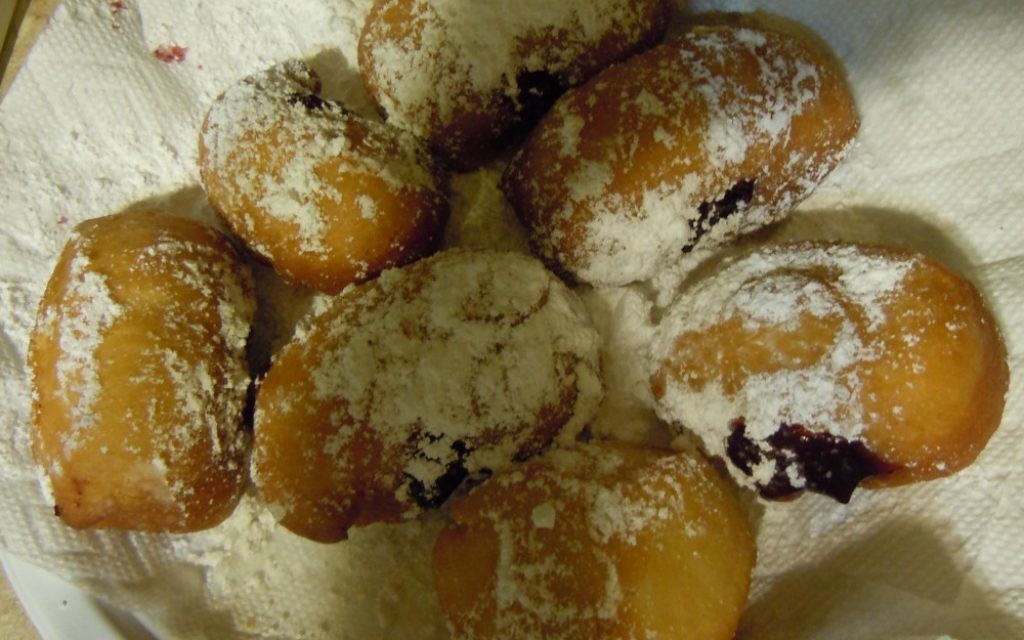Too-Hard Reality of My First Sufganiyot
I’ve never been a big fan of sufganiyot. The ones I’ve tasted have always seemed heavier and less flavorful than a standard American jelly doughnut.
Meanwhile, Krispy Kreme’s raspberry-filled, glazed jelly doughnut is about as close to doughnut perfection as I’ve found, and you can even get it under Atlanta Kosher Commission certification. No powdered concoction rolled out for Chanukah could match it.

For home frying to celebrate the holiday, the savory flavors of latkes and fried chicken are better than anything sweet, and when it’s time for dessert, my wife has found a quick and easy way to deliver great taste: canned biscuit dough tossed into the deep fryer, then into powdered sugar.
Get The AJT Newsletter by email and never miss our top stories Free Sign Up
But as sufganiyot emerged as a major theme in this year’s Chanukah issue — a report on the options for the real deal in Atlanta, some fancy alternatives and an Israeli home baker’s gluten-free efforts — I couldn’t resist looking for a recipe in a new cookbook that arrived in the AJT offices, “Traditional Jewish Baking: Retro Recipes Your Grandma Would Make … If She Had a Mixer” by Carine Goren.
Sure enough, there it is on Pages 174 and 175. The sufganiyot in the photo are far too close to perfection to be a reasonable goal, and it’s annoyingly clear from the measurements that Goren is an Israeli who converted the recipe from metric to the English units we Americans use. For example, her 30-sufganiyot recipe requires 3½ ounces of butter when a full stick is 4 ounces.
But the recipe seemed simple enough. I was pleased it called for lemon zest and surprised it included brandy. So why not?
The best reason why not is that I’m not a baker. I used to bake bread, but usually with a bread machine, so there was a low degree of difficulty.
I bake pies at Thanksgiving every year, but there’s a reason for the phrase “easy as pie.” It’s hard to make a great pie, but it’s even harder to make a bad one. You don’t have to worry about yeast activating or dough rising. The chemistry and the time are minimized.
But I’ve watched enough baking competitions on TV to give it a try.
You can see the results on this page. Not surprisingly for someone who is used to the forgiving approximations of making pumpkin pies, I wasn’t precise enough. My sufganiyot were all different sizes and shapes, and the dough never achieved the shiny smoothness Goren told me to expect.
The flavor wasn’t bad, but the density was depressing — although not too far from all those inedible sufganiyot I’ve sampled at synagogue parties and other community events over the years. I look forward to trying sufganiyot this year from professionals I trust to get a proper baseline.
My biggest failure had nothing to do with the chemistry of the dough or the temperature of the oil and everything to do with pumping those pastries full of berry jam. It’s a skill I lack, so the filling either became a topping or the sufganiyah nearly turned into a jelly sandwich.
It may be Chanukah sacrilege, but while it was fun to try sufganiyot once, I think we’ll be back to the instant gratification of fried biscuit dough when the Festival of Lights begins.






comments